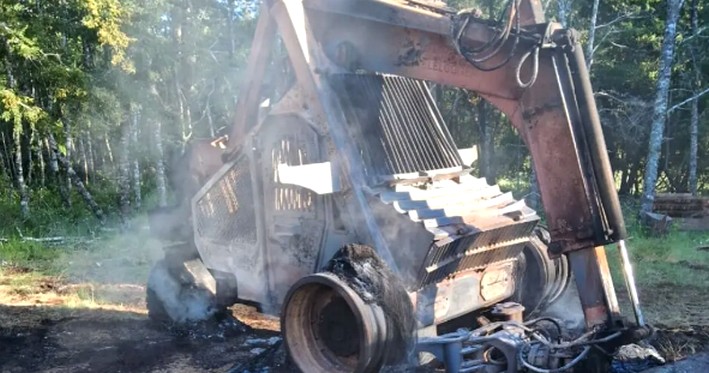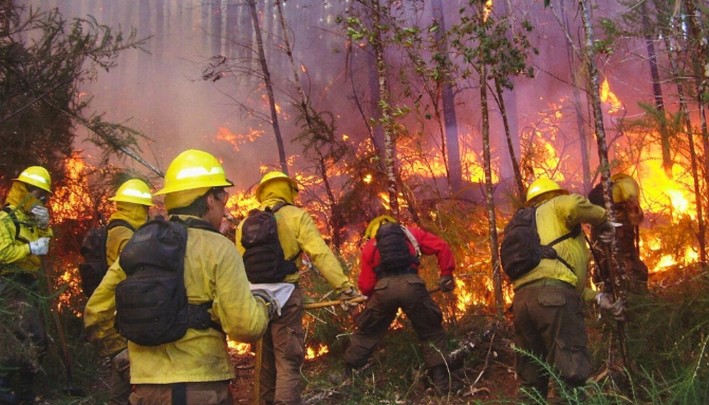Giants of the Air Reinforce Chile's Firefighting Efforts
The Erickson Aircrane helicopters, with a capacity of 10,000 liters of water, join the firefighting efforts in Biobío and Ñuble.
The arrival of the Erickson Aircrane in Chile marks a milestone in wildfire prevention and combat in the Biobío and Ñuble regions. These helicopters, deployed by the company Ecocopter in collaboration with Arauco, feature advanced technology that enables them to carry out firefighting operations with unprecedented efficiency.
With a 21.2-meter diameter rotor and six blades, the Aircrane can carry up to 10,000 liters of water and refill in just 45 seconds using its suction system, which even allows the use of seawater. Their flight range of 246 nautical miles makes them ideal for operations across vast areas.
Ramón Figueroa, Arauco's Deputy Fire Protection Manager, emphasized the importance of these aircraft in preventing major disasters. "They are the largest U.S.-made aircraft of their kind and are designed to prevent complex fires from escalating into major emergencies," stated Figueroa.
The helicopters' precision was also highlighted by pilot Miguel Cuba, who mentioned that "during emergencies, it allows us to decide the exact amount and location for water discharge." This feature is crucial for directly targeting the fire's head and slowing its advance.
The technical specifications of the Erickson Aircrane are remarkable: standing 4.5 meters tall and 21.41 meters long, they reach a top speed of 205 kilometers per hour and can perform water drops in eight different modes, giving them unique versatility in wildfire combat.
The impact of these aircraft on local communities is significant. Ángel Castro, mayor of Santa Juana, a municipality historically affected by wildfires, stressed the importance of having such equipment. "Having this aircraft allows us to fight fires more effectively before they spiral out of control," Castro remarked.
The addition of the Aircrane completes the program of partner companies of the Chilean Wood Corporation (Corma), which for the 2024-2025 season includes 68 aircraft and over 4,400 trained firefighters, according to Alejandro Casagrande, Corma's president for the Biobío and Ñuble regions.
The community, represented by María Cortés, leader of the Neighborhood Council in Santa Juana, expressed gratitude and confidence upon seeing these aircraft in action. "This is wonderful, especially after what we endured with the fires. Seeing this aircraft here gives us a greater sense of protection," Cortés noted.
With the arrival of the Erickson Aircrane, Chile strengthens its wildfire response capabilities, offering new hope for the protection of its forests and communities.

















